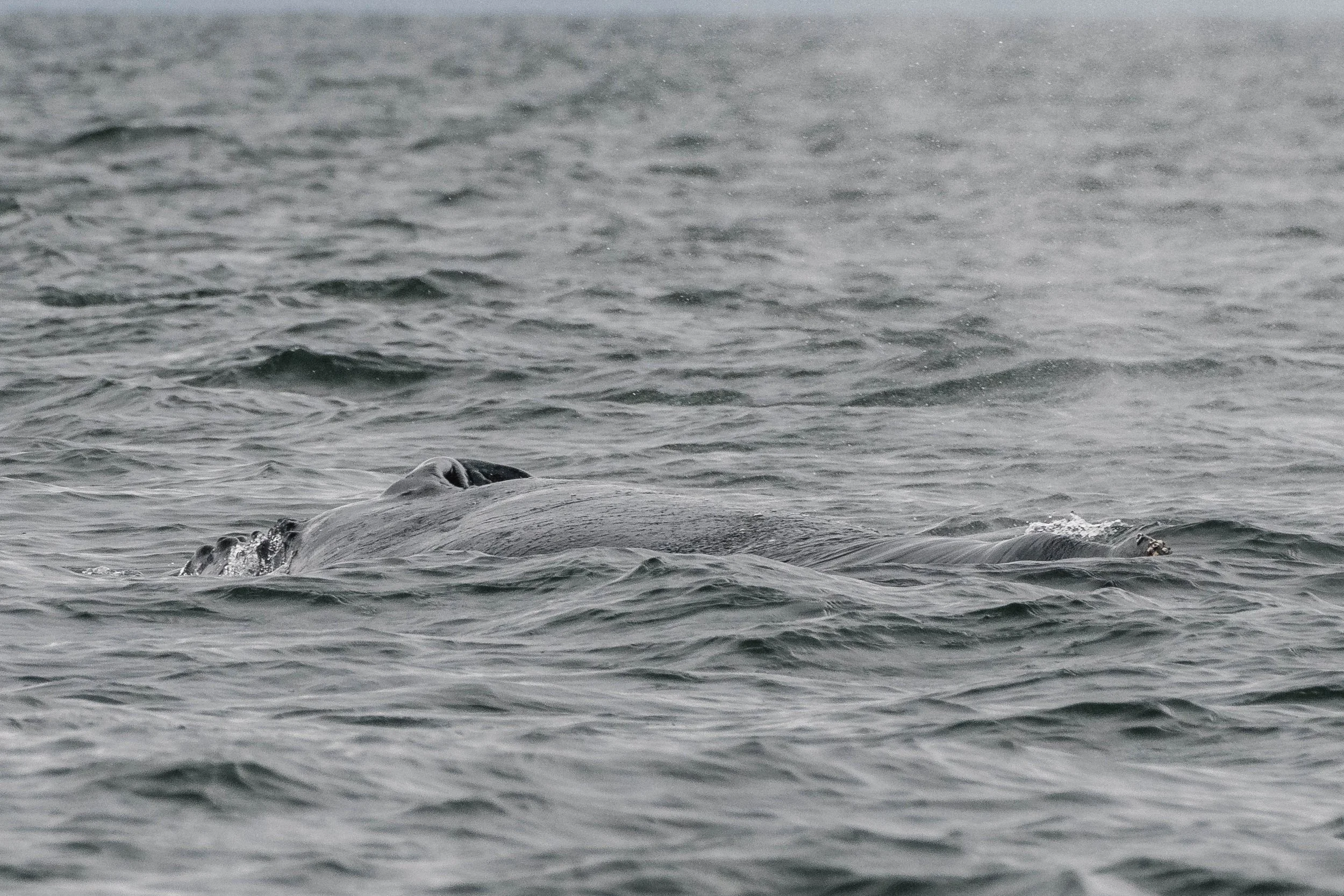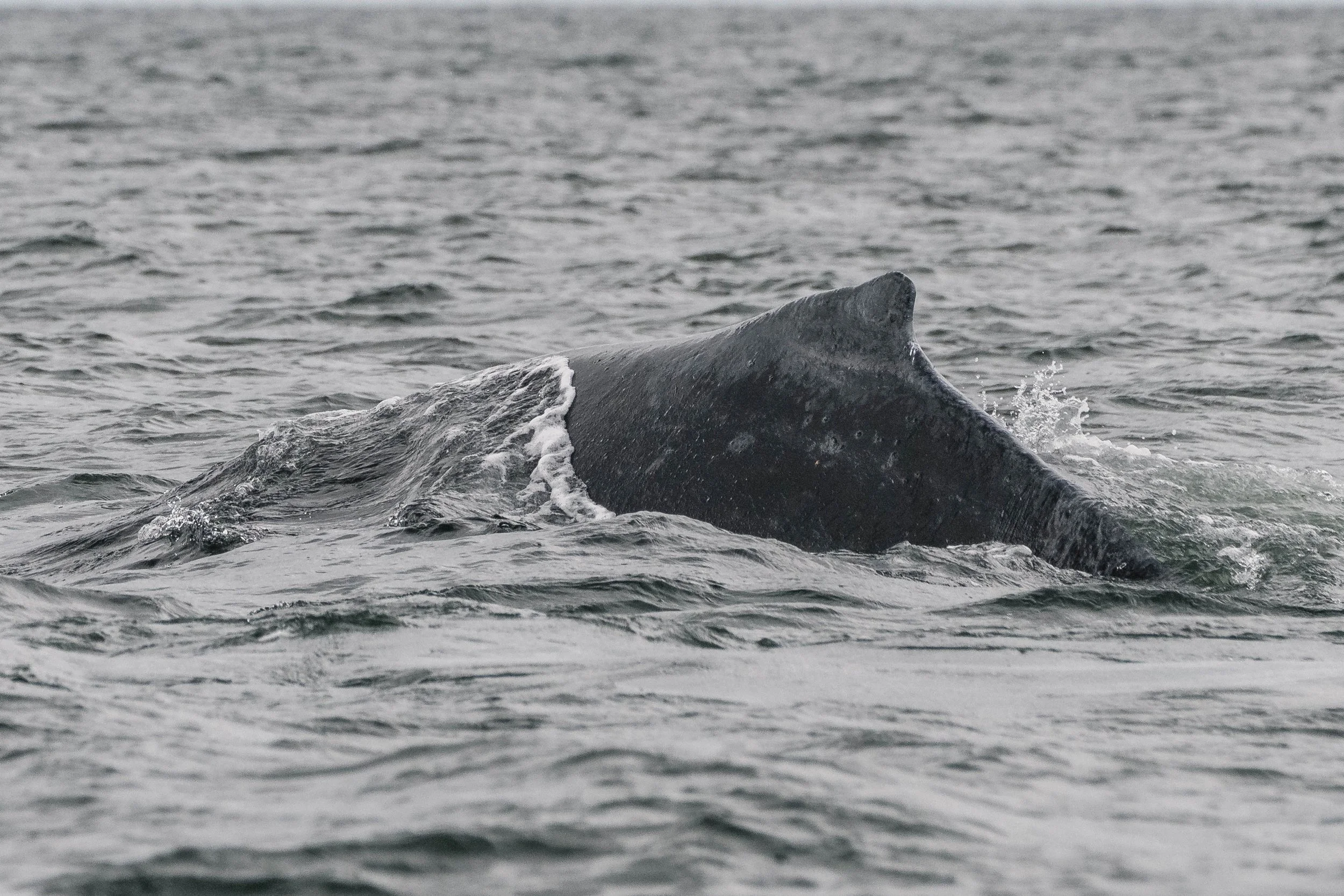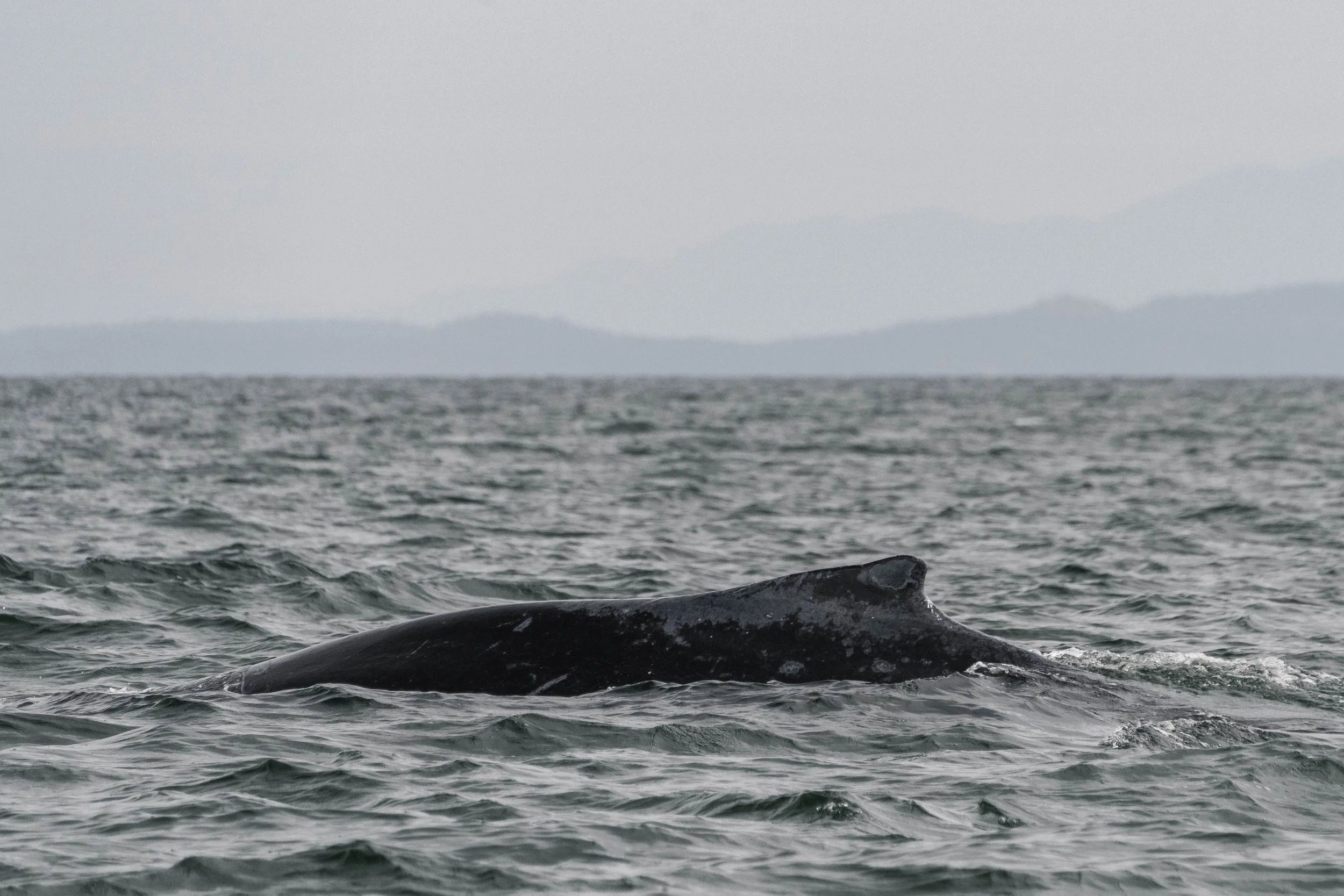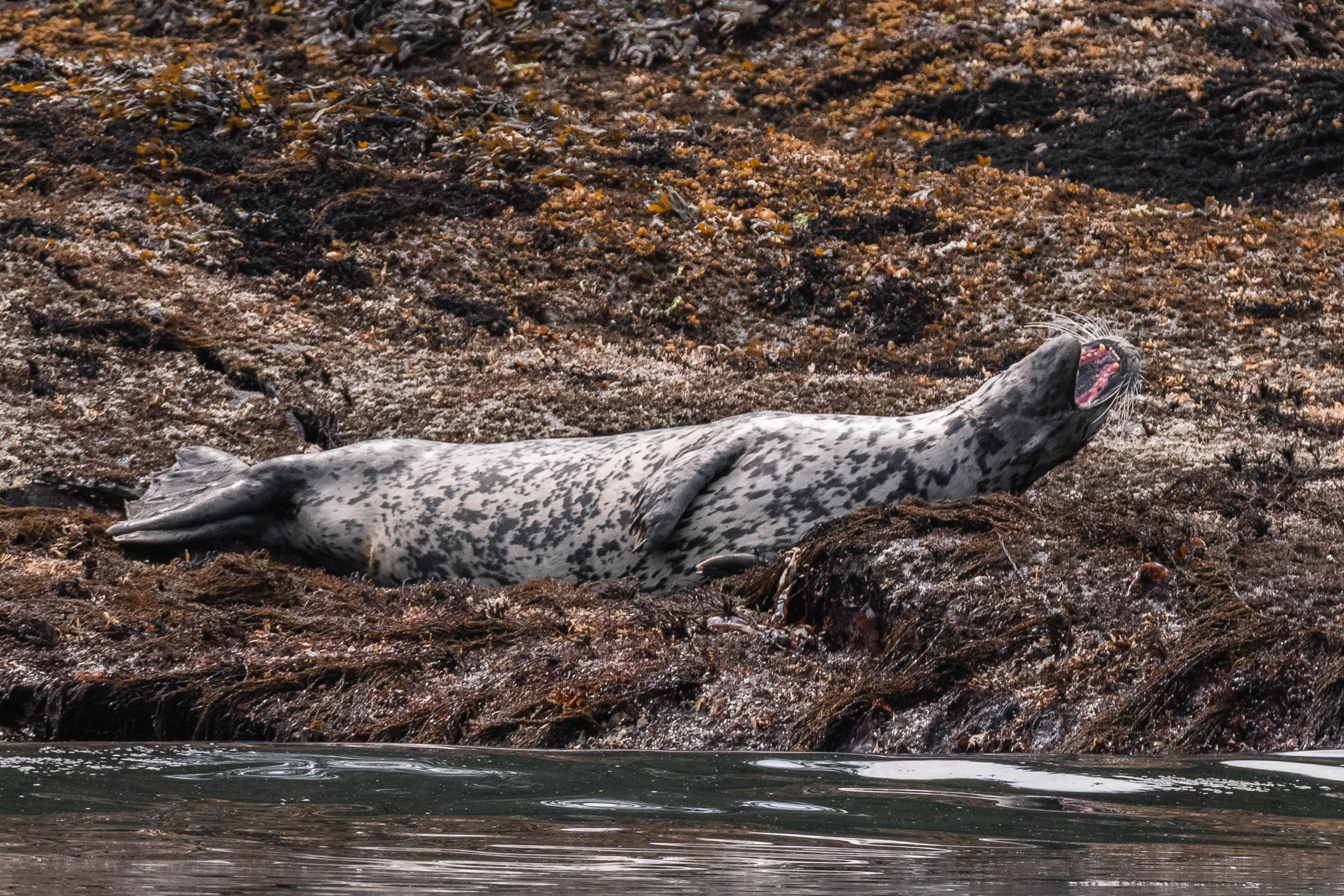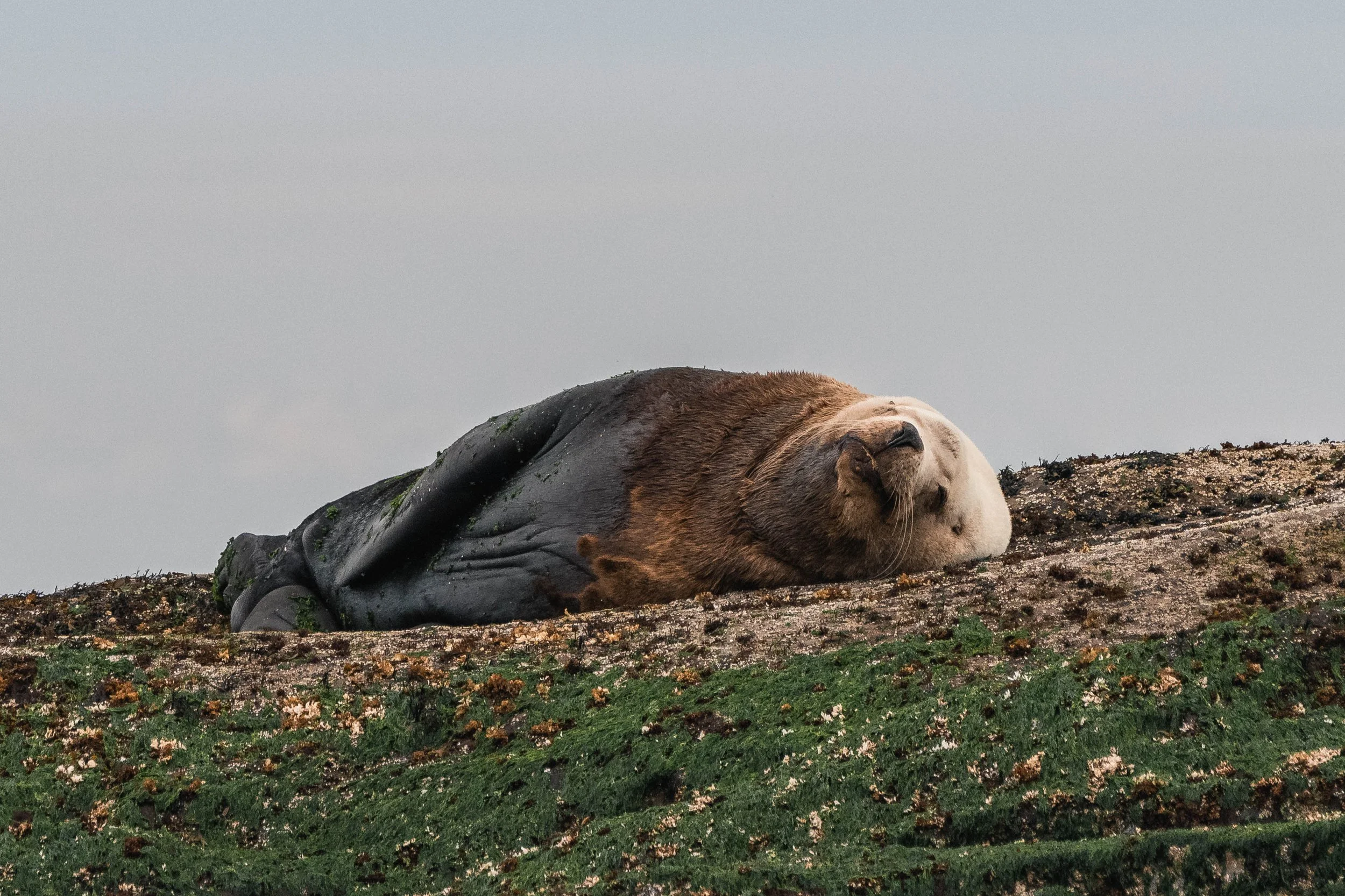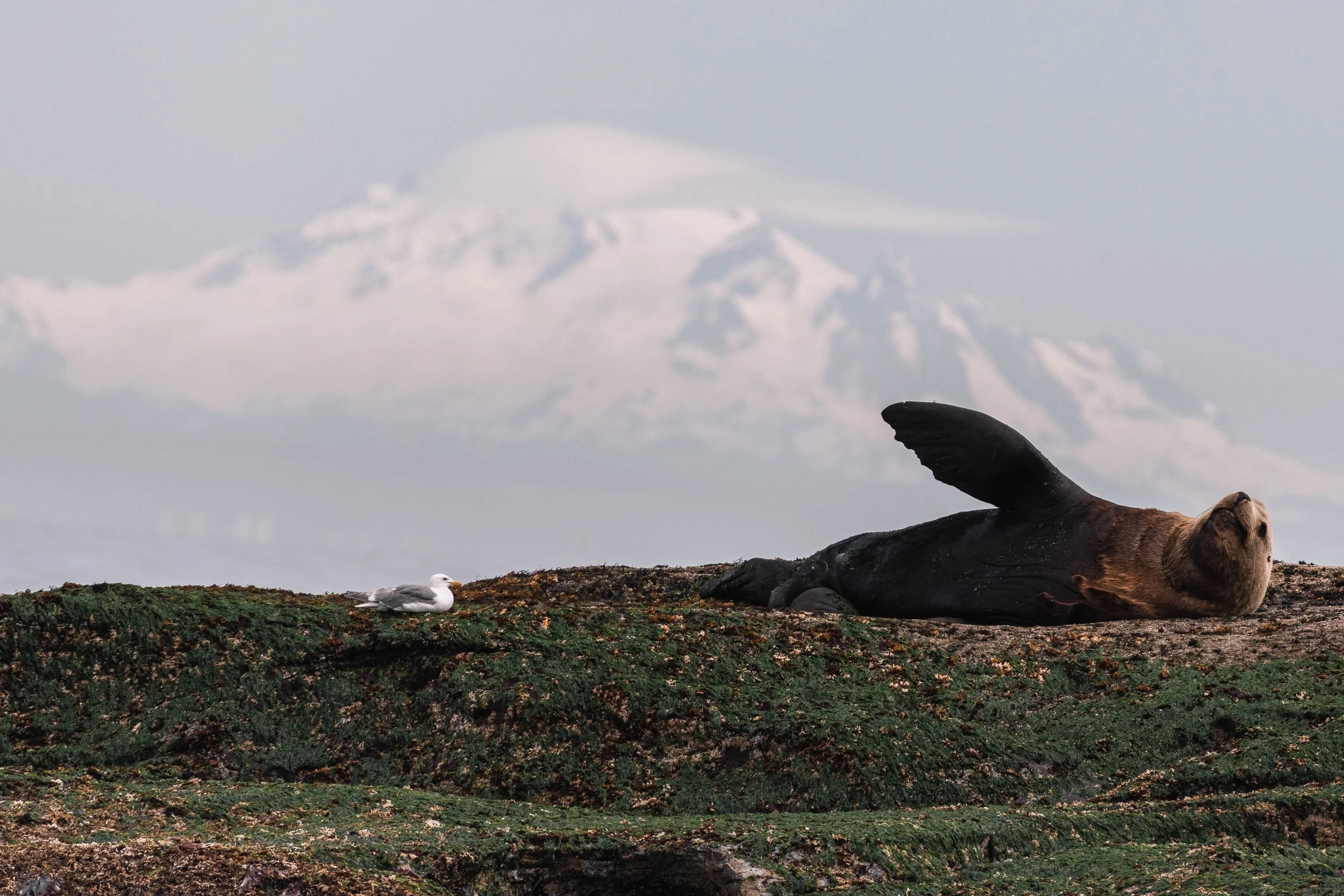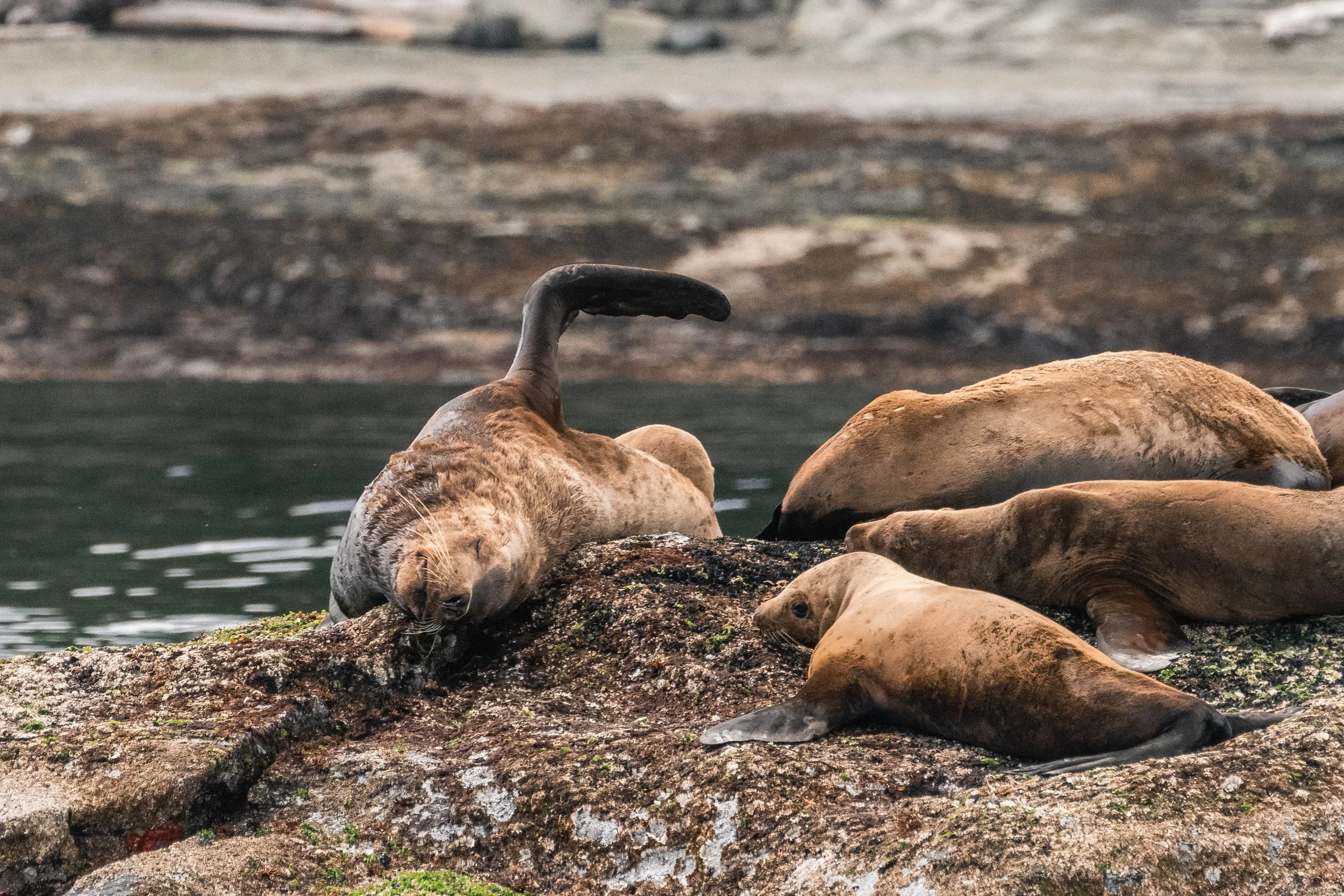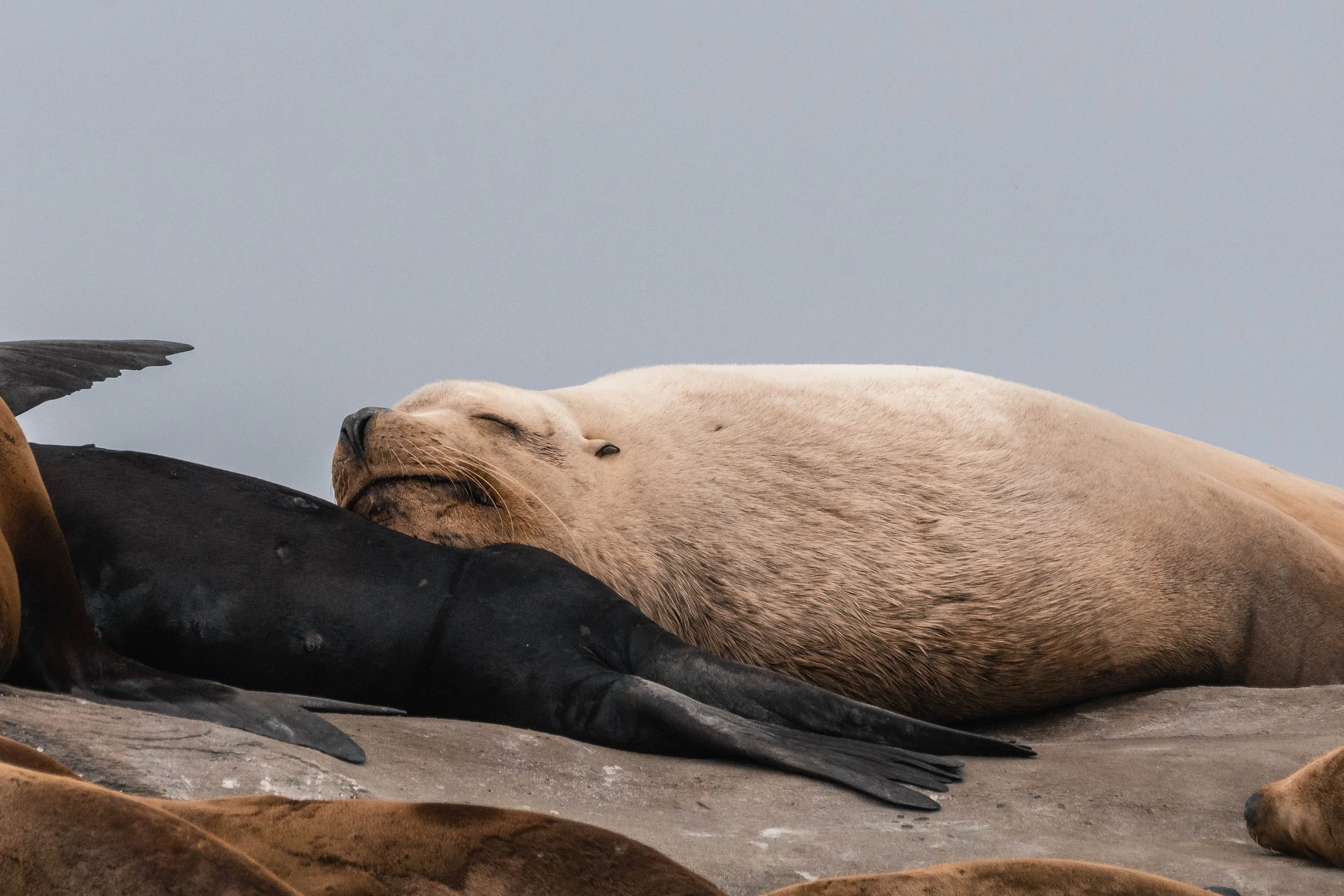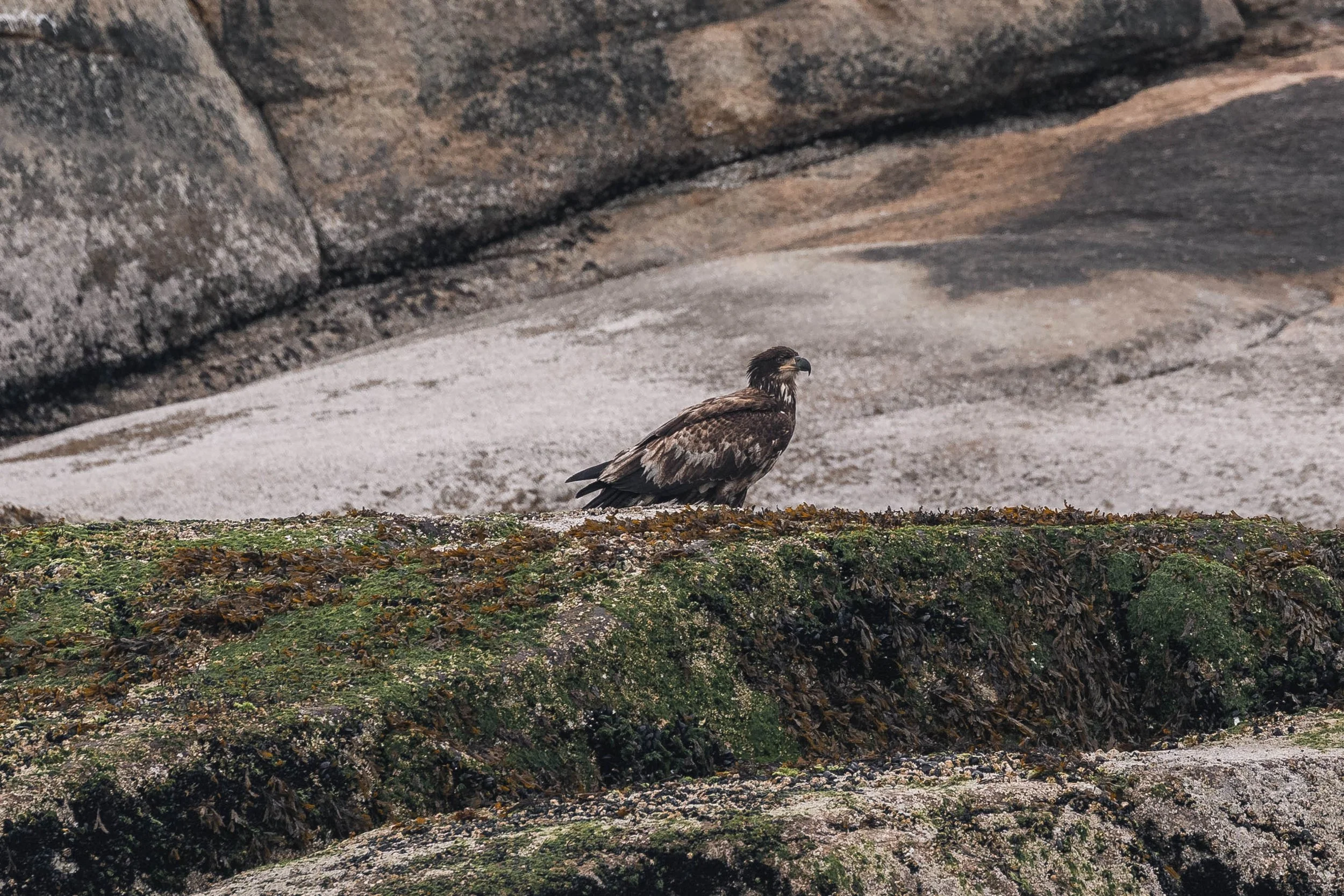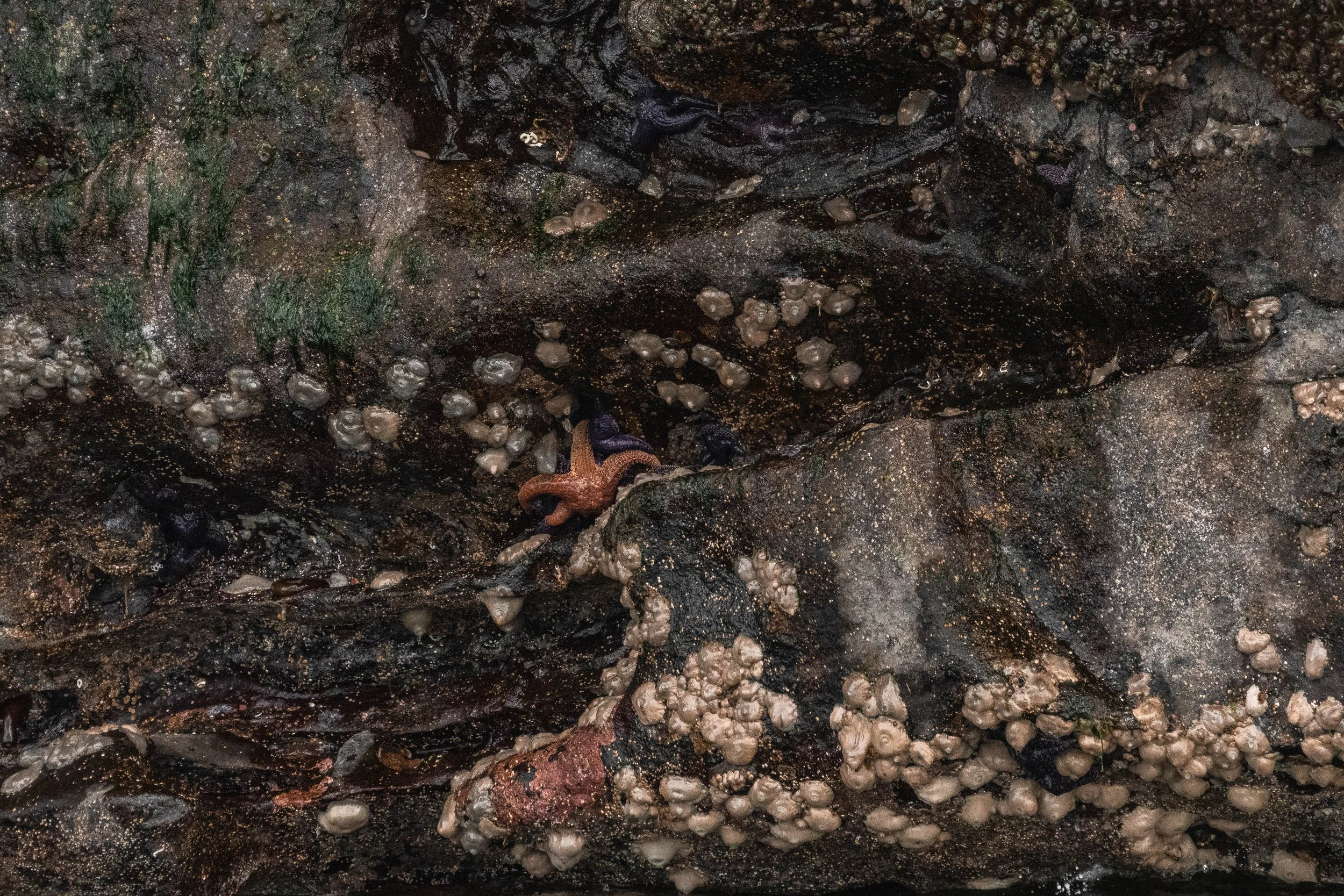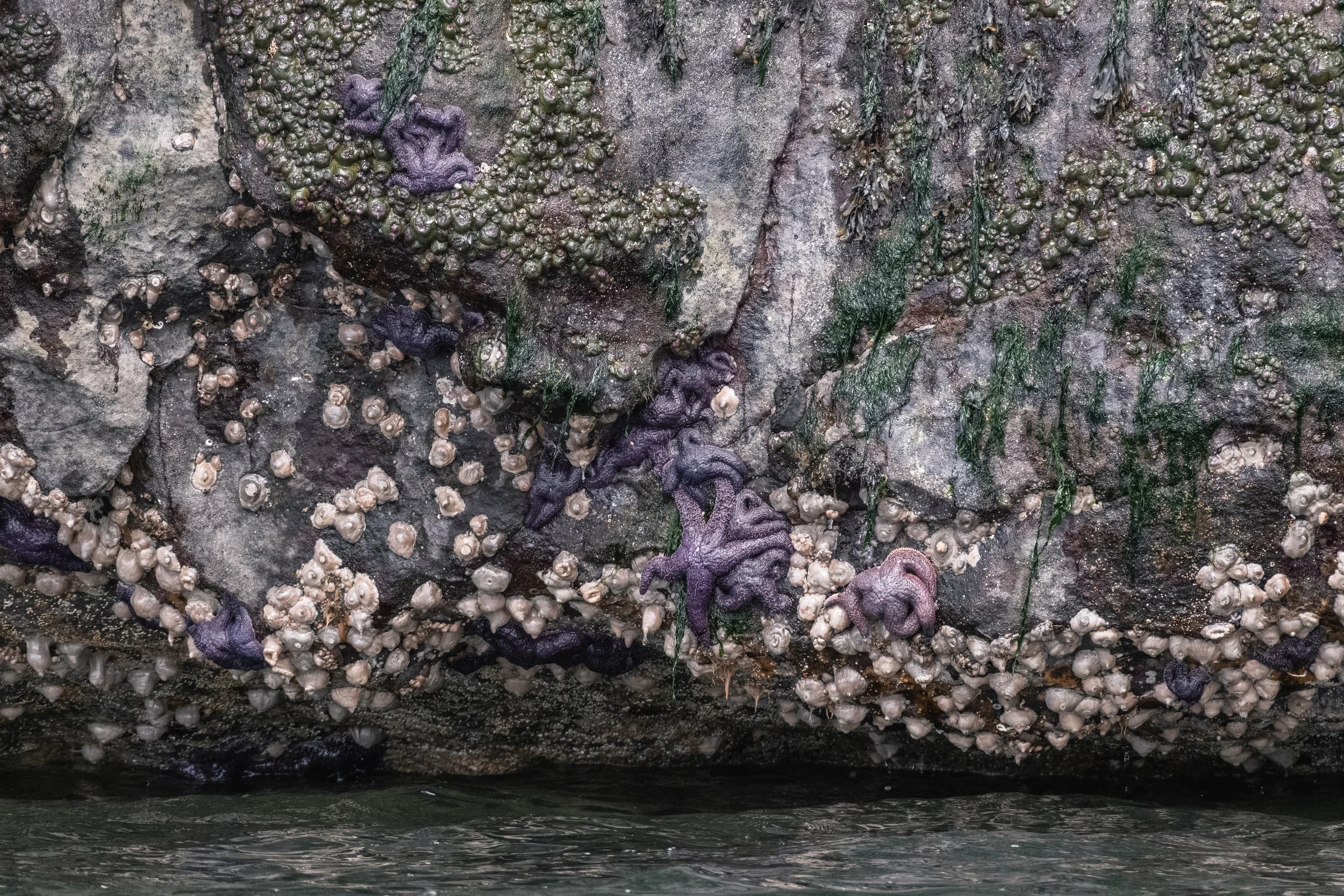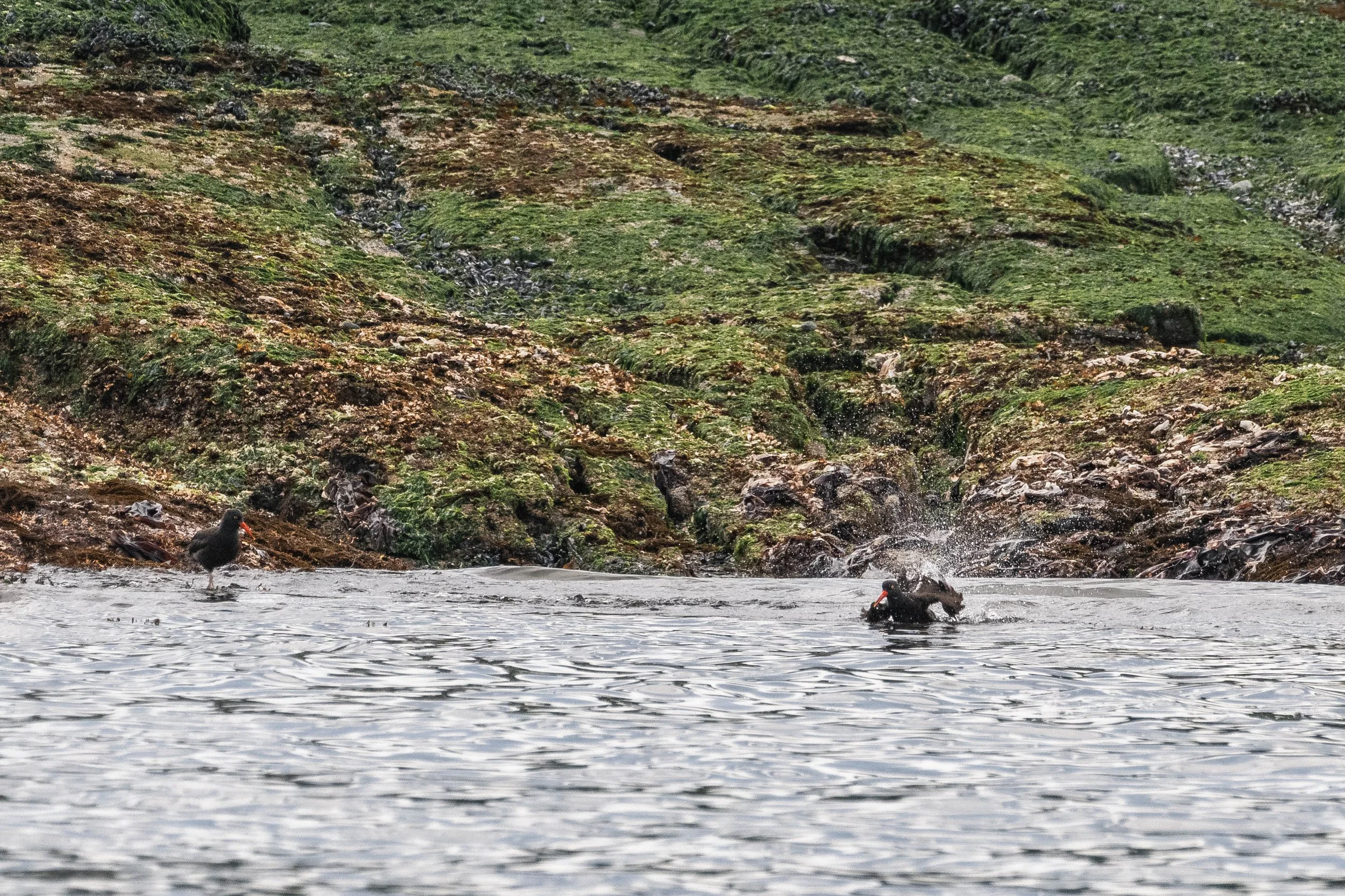May 30, 2025 - A beautiful day with humpbacks!
The full fleet was out today, eager to spot whales. One advantage of an overcast day, and we get plenty of those on the Island, is that it makes blows and splashes easier to spot thanks to the contrast, even from a distance. With a bit of luck on our side, we saw blows in the Strait, not too far from home. Just a hop, skip, and a jump away, near Entrance Island, is where we found our whales today.
Incognito (BCX2053) appeared to be off on their own, entertaining themselves with some seaweed. Not far away, we spotted more blows — it was Callisto (BCX2486) and Mow (BCY0523calf2023), most likely busy feeding.
For decades, humpback whales in the Northern Hemisphere were a symbol of the devastating effects of commercial whaling. By the mid-20th century, their numbers had plummeted, driving them dangerously close to extinction. But today, thanks to widespread conservation efforts and international protections, humpback whale populations are making a remarkable comeback, and along the way, we're learning that these giants of the sea are far more social and complex than we once believed.
The humpback whale (Megaptera novaeangliae) was once one of the most heavily hunted species during the era of industrial whaling. Their large size, slow speed, and coastal migration routes made them easy targets. By the time commercial whaling was banned in many regions in the 1960s and 1970s, humpback populations had been reduced by more than 90%.
Thankfully, global conservation measures began to take hold. The 1985 moratorium by the International Whaling Commission (IWC) on commercial whaling marked a turning point. Marine sanctuaries were established, ship speeds were regulated, and entanglement prevention programs were rolled out. Over time, these efforts started to pay off.
Recent data shows that humpback whale numbers in several Northern Hemisphere populations are rebounding impressively. Similar trends are being observed in the North Atlantic, where sightings are increasing steadily.
As the population has recovered, researchers have had more opportunities to study humpbacks closely, and what they’re finding challenges long-held beliefs. Humpbacks were traditionally thought to be solitary animals, only coming together temporarily during breeding or feeding. But recent observations paint a much richer picture.
Humpbacks display complex social structures that vary by region and season. In their feeding grounds, especially in places like Alaska or Norway, they often work cooperatively in groups to corral fish, a strategy known as bubble-net feeding. This behaviour, once thought to be rare, is now recognized as a learned, socially transmitted technique passed down between whales.
In breeding areas, researchers have observed that male humpbacks form alliances and engage in intricate displays of song and physical interaction, possibly to attract mates or establish dominance. Some whales return to the same breeding groups year after year, suggesting lasting social bonds.
There’s also growing evidence that mothers with calves associate with other females for extended periods, providing protection and possibly sharing knowledge, a trait more akin to elephant herds or dolphin pods than what we previously thought possible for baleen whales.
The resurgence of humpback whales is not just a feel-good environmental success story, it also brings ecological benefits. As top-tier consumers, humpbacks play a crucial role in ocean health. Their feeding behaviour helps cycle nutrients through the water column, boosting plankton productivity and supporting entire marine food webs. Known as the whale pump!
Despite this success, challenges remain. Ship strikes, entanglement in fishing gear, and the impacts of climate change still pose significant risks to humpbacks. Shifting ocean temperatures can alter prey availability and migration patterns, adding new layers of uncertainty to their future.
Still, the story of the humpback whale’s comeback is a testament to what coordinated global action can achieve. As we continue to protect and study them, these gentle giants are not only rebounding in number but also revealing themselves to be complex, social beings — a reminder of how much more there is to learn about our oceans and why they’re worth protecting. After spending time with our gentle giants, we had more to see!
We spotted some of our familiar harbour seals hauled out on the rocks, always adorable and entertaining to watch. We were also lucky enough to encounter both species of sea lions today. The massive Steller sea lions, with mature males weighing up to 2,800 pounds, and the California sea lions, smaller but still impressive, with males reaching up to 1,000 pounds. A river otter was enjoying a meal on the bank before cooling off with a swim. Eagles were everywhere; we saw a mix, mature bald eagles, recognizable by their distinct white heads and tails, and juveniles, who sport a mottled blend of brown and white feathers. They won’t acquire their iconic white plumage until around five years of age. We even got a glimpse of a chick in the nest, offering a glimpse at the eagle’s growth cycle. Last but not least, we spent some time at the Gabriola Bluffs, where sleek black cormorants nest along the rocky cliffs, and vibrant sea stars were visible in the intertidal zone thanks to the low tide.
Enjoy the photos below taken by Hayleigh Hilbert, Aly Kohlman and Val Watson.
Incognito’s dorsal fin. Photo by Hayleigh Hilbert.
Incognito in front of the Coastal Mountains. Photo by Hayleigh Hilbert.
The other side of Incognito’s dorsal. Photo by Aly Kohlman.
Incognito playing with seaweed. Photo by Hayleigh Hilbert.
Incognito’s rostrum. Photo by Hayleigh Hilbert.
Can you spot all the bumps call tubercles? Photo by Hayleigh Hilbert.
Incognito going for a dive. Photo by Hayleigh Hilbert.
Mow’s dorsal fin. Photo by Aly Kohlman.
Moe going down. Photo by Aly Kohlman.
The underside of Mow’s tail. Photo by Val Watson.
Callisto’s dorsal fin. Photo by Val Watson.
Callisto. Photo by Aly Kohlman.
Mow with their curved dorsal. Photo by Aly Kohlman.
Incognito going for a dive. Photo by Aly Kohlman.
Callisto with all her barnacle passengers. Photo by Val Watson.
An interesting angle of Mow. Photo by Val Watson.
Callisto. Photo by Val Watson.
Callisto. Photo by Val Watson.
Callisto creating a fluke waterfall. Photo by Val Watson.
Callisto. Photo by Val Watson.
The underside of Callisto’s flukes. Photo by Val Watson.
Mow’s curled flukes. Photo by Val Watson.
Oh big stretch and yawn from our harbour seal. Photo by Aly Kohlman.
The river otter having a bit to eat. Photo by Val Watson.
She spotted us! The river otter is agile on land unlike the awkward sea otter who spends the majority of their time in the ocean. Photo by Val Watson.
Time for a swim. Photo by Aly Kohlman.
Cooling off after lunch. Photo by Aly Kohlman.
Steller Sea Lions looking comfortable. Photo by Aly Kohlman.
Not sure what is happening here, chasing their flipper like a dog chases their tail perhaps? Photo by Aly Kohlman.
The size difference between the mature male sea lions and juveniles is very noticeable. Photo by Aly Kohlman.
Look at that fat head on this Steller! Photo by Val Watson.
Very relaxed! Photo by Val Watson.
“This is Mt. Baker an active volcano in Sumas Washington.” Photo by Aly Kohlman.
A Steller cuddle puddle. Photo by Hayleigh Hilbert.
Napping with a flipper up. Photo by Val Watson.
Getting the side eye from this Steller. Photo by Hayleigh Hilbert.
Using another for a pillow is comfortable! Photo by Val Watson.
A photogenic California Sea Lion. Photo by Aly Kohlman.
He knows he’s cute! Photo by Aly Kohlman.
This California Sea Lion has something sticking out of his mouth. Photo by Aly Kohlman.
A juvenile bald eagle. Photo by Hayleigh Hilbert.
A few gulls with our juvenile. Photo by Hayleigh Hilbert.
An adult bald eagle. Photo by Aly Kohlman.
Sea stars and anemone at low tide along the Bluffs. Photo by Val Watson.
Another look at our sea life on the Bluffs. Photo by Aly Kohlman.
A black oyster catcher taking a bath. Photo by Val Watson.
An eaglet in the nest. Photo by Aly Kohlman.
Can you spot both eaglets? Photo by Aly Kohlman.
A majestic bald eagle. Photo by Aly Kohlman.
One of the babies sitting up in the nest. Photo by Val Watson.
Cormorants in their nest. Photo by Val Watson.
Action shot! Photo by Aly Kohlman.
Can you see the red on these cormorants? Photo by Aly Kohlman.
On the way to the nest with some extra padding in their beak. Photo by Val Watson.
“I have just the spot for this stick!” Photo by Val Watson.
















